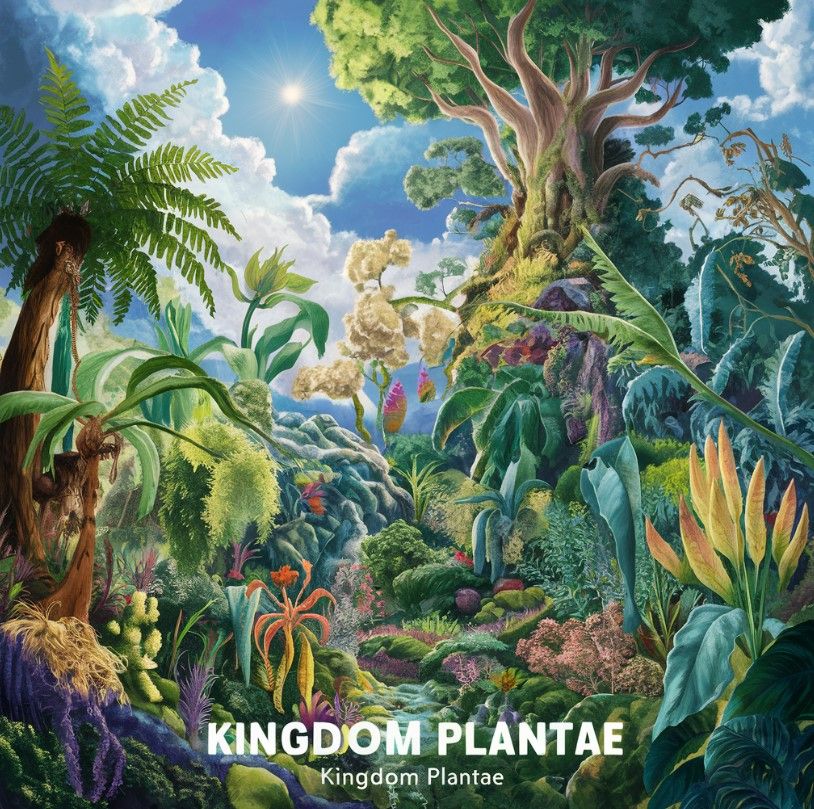Have you ever stopped to admire the incredible variety of plants around you? From towering trees to tiny wildflowers, they all showcase unique features in their leaves, stems, and fruits. Isn’t it amazing how diverse they are? Imagine if all plants looked exactly the same – wouldn’t that be a bit boring? And who could survive on just apples for their whole life? Definitely not! That’s why we’re going to dive into the fascinating kingdom of Plantae and explore its incredible diversity.
The Plant Kingdom
The Plant Kingdom, also known as Kingdom Plantae, includes a wide array of organisms – everything from green, brown, and red algae to liverworts, mosses, ferns, and the familiar flowering plants we see everywhere. What makes all these plants special? Let’s explore some of their key characteristics:
- They’re Made of Many Cells: Plants are multicellular, meaning they’re made up of many cells working together. These cells are also eukaryotic, which means they have a proper nucleus enclosed by a membrane.
- They’re Photosynthesis Experts: Plants are masters of photosynthesis, using chlorophyll (a green pigment) to capture sunlight and convert it into energy. This is how they make their own food!
- They Stay Put: Unlike animals, plants are generally non-motile, meaning they stay rooted in one spot.
- They’re Self-Sufficient: Because they make their own food through photosynthesis, plants are considered autotrophic organisms.
- They Have Strong Walls: Each plant cell is surrounded by a rigid cell wall, providing support and structure.
Classifying the Plant Kingdom
With such a huge variety of plants, how do scientists organize them all? They use a classification system based on key features, helping us understand how plants are related to each other.
One way to broadly categorize plants is into two groups:
- Cryptogams: These are plants that don’t produce flowers or seeds. Think of algae, mosses, and ferns.
- Phanerogams: These plants do produce flowers and seeds, such as gymnosperms (like pine trees) and angiosperms (flowering plants).
The Key to Classification
When classifying plants, scientists look for three main clues:
- Plant Body Structure: Some plants have simple structures, while others have much more complex bodies with roots, stems, and leaves.
- Vascular System: Some plants have specialized tissues (called xylem and phloem) that transport water and nutrients throughout the plant, like a plant’s own internal plumbing system. Others don’t have this system.
- Seed Formation: Do the plants produce seeds? And if they do, are the seeds enclosed in fruits (like apples) or are they “naked” (like in pine cones)?
Exploring the Five Major Groups of Plants
Let’s delve deeper into the five main groups within the Plant Kingdom:
- Thallophyta (Algae): Imagine the simple green, brown, and red algae that live in water. These plants don’t have a well-defined body structure – they’re quite basic! They are the simplest of the plants, and they are found in various environments, including oceans, freshwater lakes and rivers, and even on snow or ice!
- Bryophyta (Mosses and Liverworts): These are the simplest land plants, often found in damp, shady areas. They don’t have a true vascular system to transport water and nutrients effectively. Think of those soft, green mosses that cover rocks or tree trunks.
- Pteridophyta (Ferns): Have you ever seen a fern with its feathery fronds? These plants have a more developed body structure with roots, stems, and leaves. They also have a vascular system, making them a bit more advanced than mosses. Ferns reproduce by releasing spores instead of seeds.
- Gymnosperms (Conifers): These are the plants with naked seeds, often found in colder climates. Pine trees, spruces, and firs are all examples of gymnosperms. They typically have needle-like leaves and produce cones that hold their seeds.
- Angiosperms (Flowering Plants): These are the most diverse and abundant group of plants, including everything from roses and sunflowers to trees like apple and mango. Angiosperms are known for their beautiful flowers, which eventually produce fruits that contain their seeds. They are vital for our environment and are the source of many of the foods we enjoy!
The Amazing Plant Life Cycle
Plants have a fascinating life cycle that involves two distinct phases:
- Sporophyte: This is the diploid phase, meaning it has a full set of chromosomes. It’s the phase we usually see, like a mature plant with leaves and flowers.
- Gametophyte: This is the haploid phase, with half the number of chromosomes. It’s often a less noticeable stage, but it’s essential for sexual reproduction.
These two phases alternate throughout the plant’s life, ensuring genetic diversity and helping plants adapt to changing environments.
Photosynthesis: The Powerhouse of Plant Life
Photosynthesis is a crucial process that powers plant life and, indeed, much of the life on our planet. It’s how plants convert light energy into chemical energy, stored in the form of sugars. This amazing process happens in special compartments within the plant cell called chloroplasts.
Plants: The Foundation of Life
Plants are truly remarkable organisms! They provide us with food, shelter, and the oxygen we breathe. By understanding the incredible diversity and importance of plants, we gain a deeper appreciation for their vital role in maintaining life on Earth. So, the next time you see a plant, take a moment to marvel at its beauty and the incredible processes that keep it alive.

